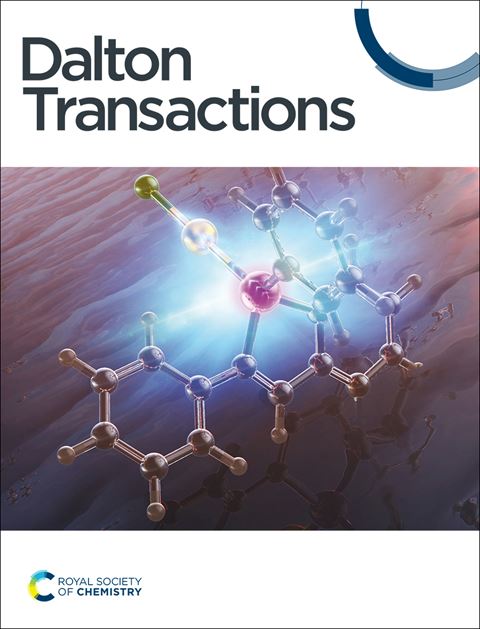Fe32+δGe35−xSix中kagome晶格断裂的自旋取向和磁挫败
IF 3.5
3区 化学
Q2 CHEMISTRY, INORGANIC & NUCLEAR
引用次数: 0
摘要
采用固态和化学气相输运反应合成了Fe32+δGe35−xSix。单晶和高分辨率粉末x射线衍射实验表明,Fe32+δGe35−xSix是Fe32+δGe35−xEx (E = p元素)三元化合物家族的第三个成员,另外两个是Fe32+δGe33As2和Fe32+δGe35−xPx。Fe32+δGe35−x6具有MgFe6Ge6和Co2Al5两种母体结构类型的二维共生结构。与其他成员相似,Fe32+δGe35−x6中共生结构的稳定是由于p元素在mgfe6ge6型块体中的取代而发生的。相互生长将MgFe6Ge6的kagome网分解成单独的六边形,同时提供了额外的几何上受挫的原子排列层。在TN ~ 150 ~ 160 K时,由于Fe32+δGe35−xSix的失磁晶格中磁相互作用的竞争,显示出反铁磁有序,而在80 ~ 90 K时,由于自旋重定向。本文章由计算机程序翻译,如有差异,请以英文原文为准。
Spin reorientation and magnetic frustration in Fe32+δGe35−xSix with a kagome lattice broken by crystallographic intergrowth
Fe32+δGe35−xSix was synthesized using solid-state and chemical vapor transport reactions both in powder and single crystalline forms. Single crystal and high-resolution powder X-ray diffraction experiments revealed Fe32+δGe35−xSix to be a third member of the Fe32+δGe35−xEx (E = p-element) family of ternary compounds alongside Fe32+δGe33As2 and Fe32+δGe35−xPx. Fe32+δGe35−xSix features a two-dimensional intergrowth structure of two parent structure types: MgFe6Ge6 and Co2Al5. Similarly to the other members, the stabilisation of the intergrowth structure in Fe32+δGe35−xSix occurs as a result of the p-element substitution in the MgFe6Ge6-type block. The intergrowth breaks the kagome net of MgFe6Ge6 into individual hexagrams, while providing additional layers of geometrically frustrated atomic arrangements. Magnetic measurements showed antiferromagnetic ordering at TN ~ 150–160 K and spin reorientation below 80–90 K owing to the competition between magnetic interactions in the frustrated magnetic lattice of Fe32+δGe35−xSix.
求助全文
通过发布文献求助,成功后即可免费获取论文全文。
去求助
来源期刊

Dalton Transactions
化学-无机化学与核化学
CiteScore
6.60
自引率
7.50%
发文量
1832
审稿时长
1.5 months
期刊介绍:
Dalton Transactions is a journal for all areas of inorganic chemistry, which encompasses the organometallic, bioinorganic and materials chemistry of the elements, with applications including synthesis, catalysis, energy conversion/storage, electrical devices and medicine. Dalton Transactions welcomes high-quality, original submissions in all of these areas and more, where the advancement of knowledge in inorganic chemistry is significant.
 求助内容:
求助内容: 应助结果提醒方式:
应助结果提醒方式:


